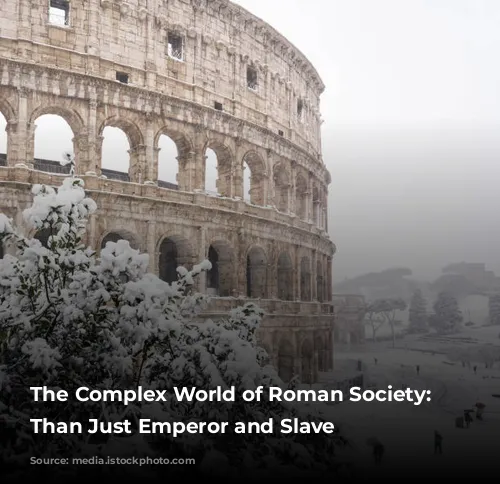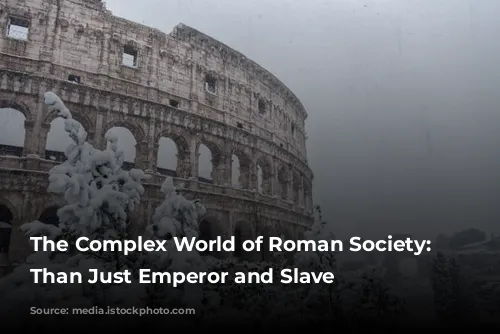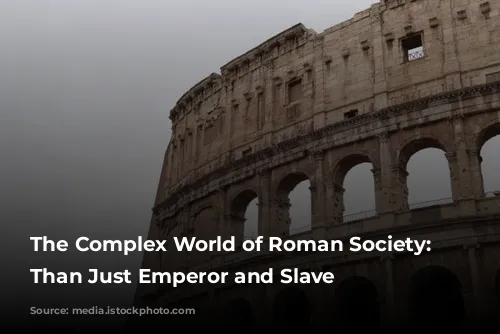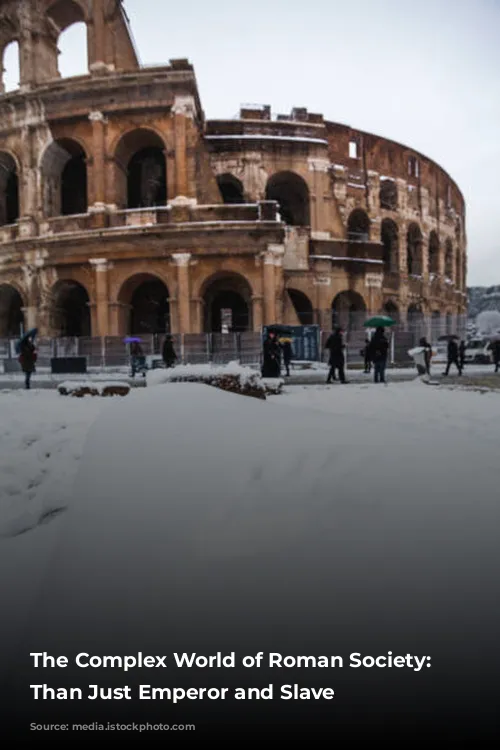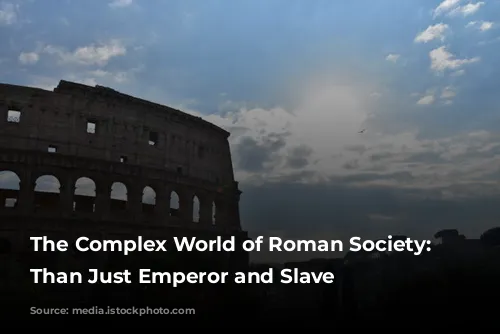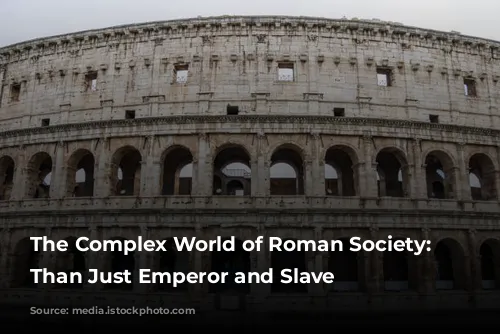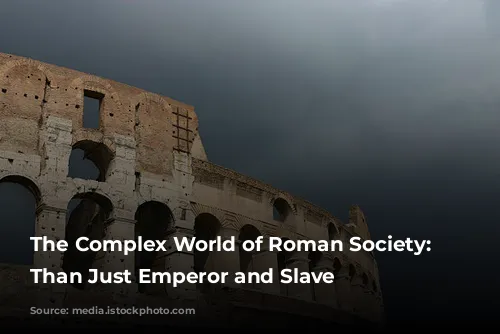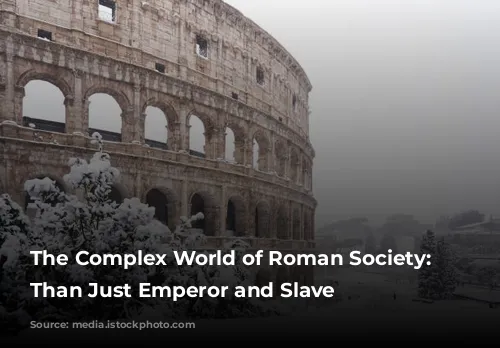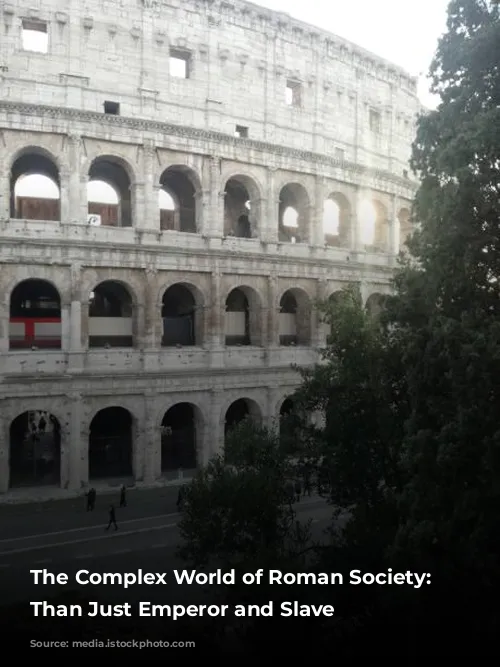Roman society, a vast and intricate tapestry of power and privilege, was far more complex than the simple dichotomy of emperor and slave. While this stark contrast captured the extremes, it didn’t fully unveil the intricate web of social structures that shaped Roman life.
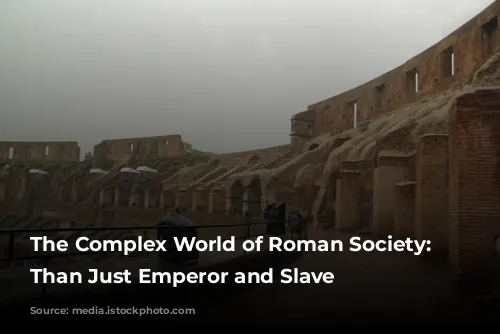
Status: The Key to Understanding Roman Life
Status was a defining factor in Roman society, influencing everything from daily interactions to legal rights. In the first century AD, Pliny the Younger, a prominent Roman administrator and writer, observed the stark difference in the quality of food and drink served at a dinner party. This subtle but deliberate action by the host mirrored the rigid social hierarchy prevalent in Roman society. Your status dictated how you were treated and, importantly, how you treated others.
Roman law didn’t recognize equality. It meticulously categorized individuals, defining their power, influence, punishments, even their dress, and seating arrangements in the amphitheater. The most fundamental distinction lay between the free and the slaves. All inhabitants of the empire were either free or bound in servitude, a fate determined by birth or, more often, by the harsh realities of war. Slaves were considered property, subject to the absolute authority of their masters. However, slavery wasn’t always a lifelong sentence. Slaves could, and often did, gain their freedom**.
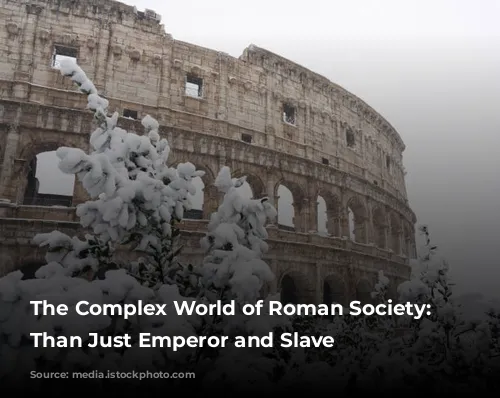
Citizenship: A Privilege and a Distinction
Freedom wasn’t synonymous with equality. The Roman Empire was a vast tapestry woven with various shades of freedom. Free inhabitants were further divided into citizens and non-citizens. Citizenship was a coveted status, granting exclusive privileges. Only citizens could hold administrative positions, serve in the legions, and enjoy specific legal protections. From the end of the first century BC, the Roman Empire was ruled by emperors, holding the pinnacle of imperial status. The senate, representing the elite citizen class, continued to hold a significant role, although their power was curtailed under the emperors.
Citizenship was a privilege that expanded rapidly, granted as a reward to individuals, families, and even entire settlements. Emperor Caracalla’s landmark decree in 212 AD extended citizenship to all free inhabitants of the empire. However, even among citizens, a clear hierarchy existed. Senators, equestrians, and the provincial elite occupied the highest echelons of privilege and power. Their status was visually marked, with senators sporting a broad purple stripe on their togas, while equestrians adorned a narrower purple stripe and a gold finger ring.
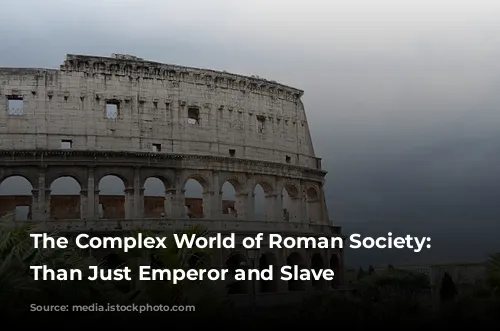
Legal Status: Defining the Boundaries
Legal status served as a defining boundary in Roman society, shaping lives from the highest senator to the most humble slave. The Roman social order, as depicted by ancient sources, focused heavily on status display and symbols, particularly within elite, urban, and male circles. The Republic witnessed a sharp division between patricians, the powerful, established landowning families, and plebeians, encompassing the rest of the free population. In the late empire, honestiores, denoting the privileged, and humiliores, signifying the humble, further delineated the social landscape.
However, for the vast majority of the free population, legal status might have been a less significant factor in daily life. Citizenship conferred certain advantages, but these were often overlooked or taken for granted by the urban poor. By the end of the first century AD, the toga, the visual symbol of citizenship, had fallen into disuse. On the bustling streets of Rome, citizens, non-citizens, slaves, and freedmen mingled, often with few visible markers of their legal status, leading to potential confusion about their exact legal standing. In an age before mass personal documentation, verifying one’s identity was a challenge. The powerful were defined by their privileges, but sadly, these symbols shed little light on the lives and status expectations of the powerless masses.
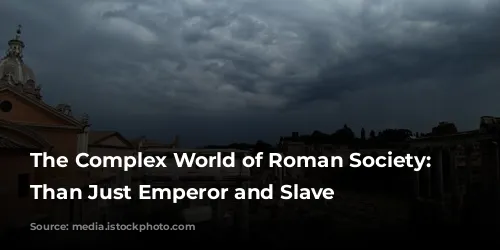
The Interplay of Social Factors: Wealth, Patronage, and Beyond
Beyond the strict boundaries of legal status, other social factors significantly influenced individuals’ lives and positions. Wealth, a powerful force in any society, played a crucial role in Roman life. Individuals could amass fortunes, which in turn allowed them to acquire status symbols. Trimalchio, a fictional freed slave created by the writer Petronius, embodied this reality. He flaunted the trappings of wealth, living in a lavish mansion, adorning himself in extravagant clothes, owning numerous slaves, and hosting extravagant feasts. He even built his own grand tomb, a testament to his newfound prosperity.
Patronage, a complex and interwoven network of relationships, further shaped Roman society. This system connected individuals of diverse backgrounds, wealth, and status. The emperor emerged as the ultimate patron, wielding immense power and influence. Beneath him, senators acted as patrons to those below them, and this hierarchical pattern repeated throughout society. The patronage system offered a path for individuals in lower strata to gain indirect access to power and authority. Clients relied on patrons for financial assistance and legal aid, while patrons received respect, favors, and a loyal following.
Even without great wealth or powerful patrons, individuals could seek to enhance their social status and gain recognition. Organizations such as the army, trade guilds, and religious guilds, often established for burial purposes, operated on hierarchical principles. These structures provided opportunities for members to hold office and acquire titles, granting them a sense of authority and social standing within their respective groups.
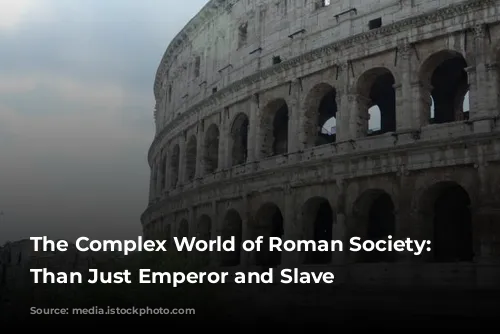
Social Mobility: Dreams and Realities
Trimalchio’s story hinted at the possibility of social mobility in Roman society. Ambition, hard work, and wealth accumulation were rewarded, but these avenues were not without limits. Birth remained a significant factor, and even wealthy newcomers could be stigmatized for their past. Ex-slaves, in particular, faced a lasting stigma, barred from holding high office. They could be mocked and despised for emulating their social superiors, highlighting the persistent societal barriers.
However, Roman society also recognized the need for fresh blood, and social barriers, while substantial, weren’t insurmountable. The senate, though traditionally exclusive, eventually welcomed new members. Even the imperial lineage itself was not impervious to social mobility. Emperor Vitellius was said to have descended from a freed slave, while emperors Trajan and Septimius Severus rose from provincial families. This gradual acceptance of new blood reflects the evolving nature of Roman society and its need for fresh talent.
For the vast majority of the urban population, however, the reality of social mobility remained questionable. While legal status could change – non-citizens becoming citizens, slaves gaining freedom – this upward mobility didn’t always translate into immediate tangible benefits. Without accompanying economic changes, individuals might experience limited practical improvements in their lives.
In conclusion, Roman society, though often portrayed in stark contrasts, was a multifaceted tapestry of social structures, legal distinctions, and individual aspirations. Status, whether based on legal rights, wealth, or patronage, played a defining role in shaping Roman life. While opportunities for social mobility existed, they were often limited by the persistent influence of birth, wealth, and societal expectations. The complexities of Roman society, its hierarchies, and its opportunities for upward mobility, continue to fascinate and intrigue historians and scholars today, offering a window into the rich and dynamic world of ancient Rome.
